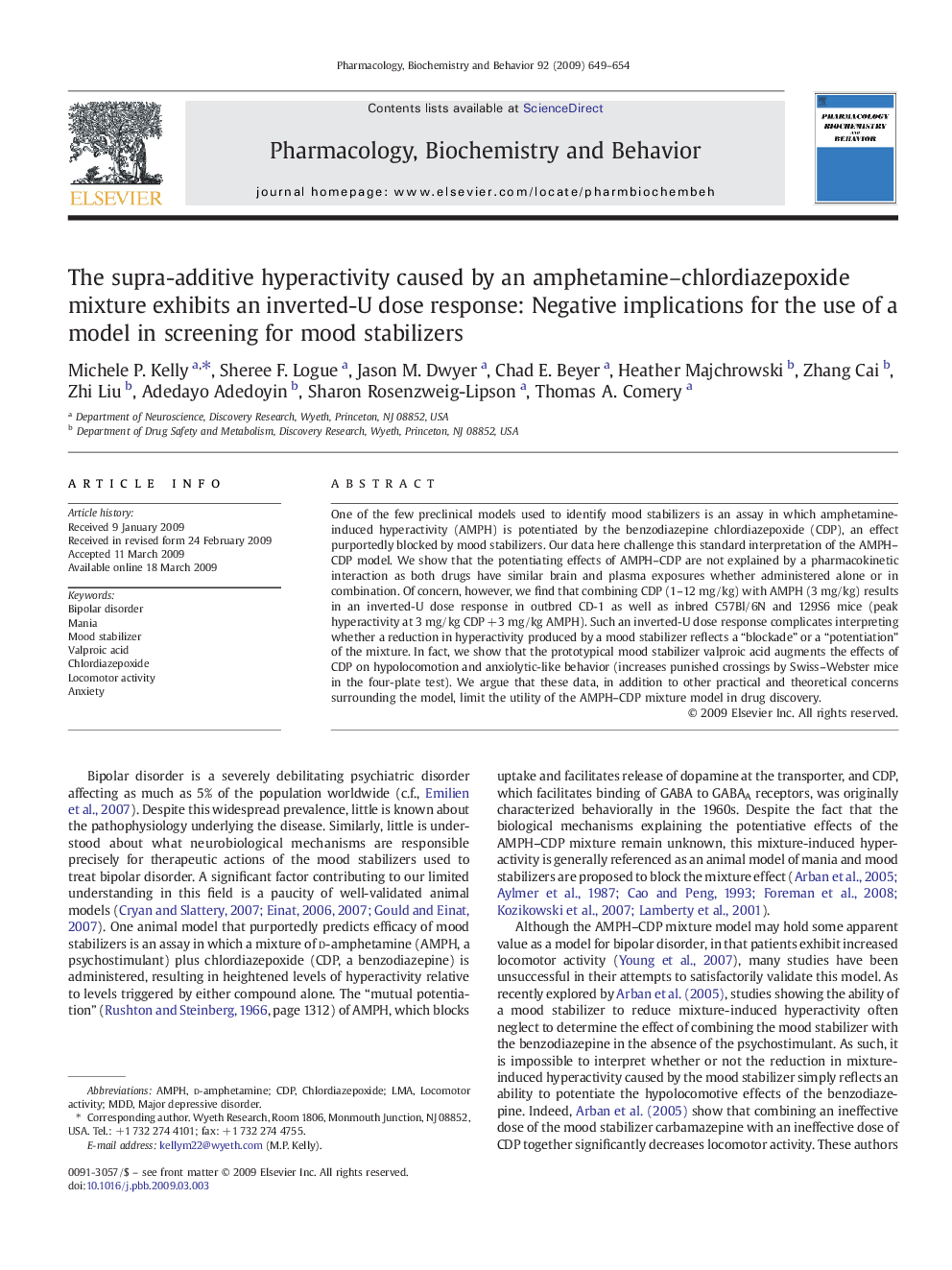| Article ID | Journal | Published Year | Pages | File Type |
|---|---|---|---|---|
| 2013690 | Pharmacology Biochemistry and Behavior | 2009 | 6 Pages |
One of the few preclinical models used to identify mood stabilizers is an assay in which amphetamine-induced hyperactivity (AMPH) is potentiated by the benzodiazepine chlordiazepoxide (CDP), an effect purportedly blocked by mood stabilizers. Our data here challenge this standard interpretation of the AMPH–CDP model. We show that the potentiating effects of AMPH–CDP are not explained by a pharmacokinetic interaction as both drugs have similar brain and plasma exposures whether administered alone or in combination. Of concern, however, we find that combining CDP (1–12 mg/kg) with AMPH (3 mg/kg) results in an inverted-U dose response in outbred CD-1 as well as inbred C57Bl/6N and 129S6 mice (peak hyperactivity at 3 mg/kg CDP + 3 mg/kg AMPH). Such an inverted-U dose response complicates interpreting whether a reduction in hyperactivity produced by a mood stabilizer reflects a “blockade” or a “potentiation” of the mixture. In fact, we show that the prototypical mood stabilizer valproic acid augments the effects of CDP on hypolocomotion and anxiolytic-like behavior (increases punished crossings by Swiss–Webster mice in the four-plate test). We argue that these data, in addition to other practical and theoretical concerns surrounding the model, limit the utility of the AMPH–CDP mixture model in drug discovery.
